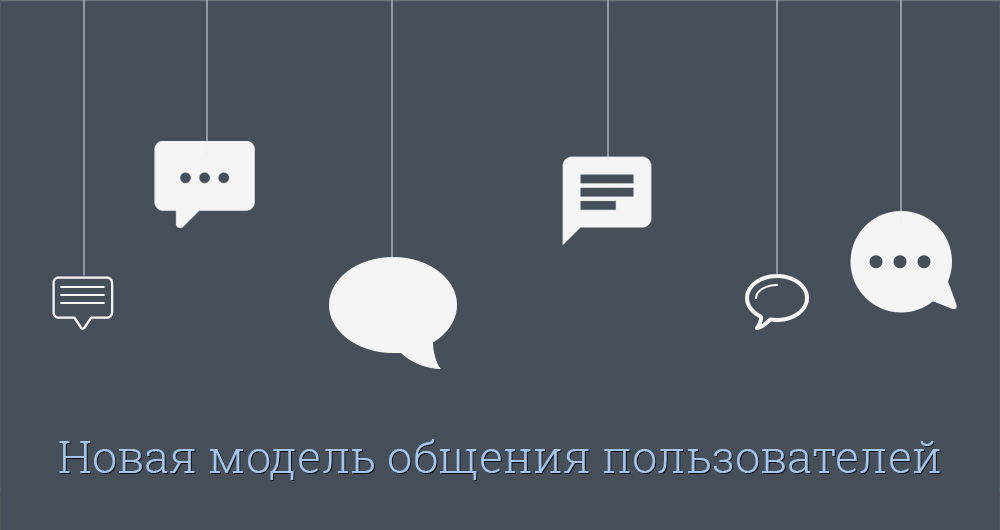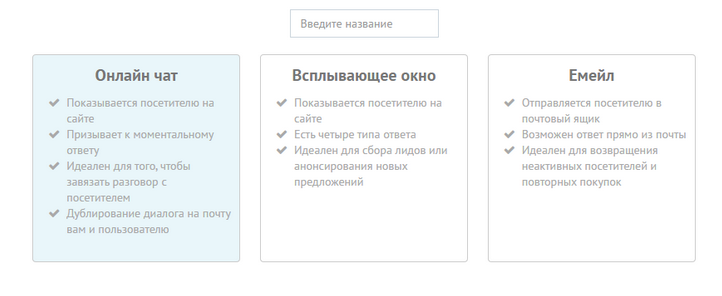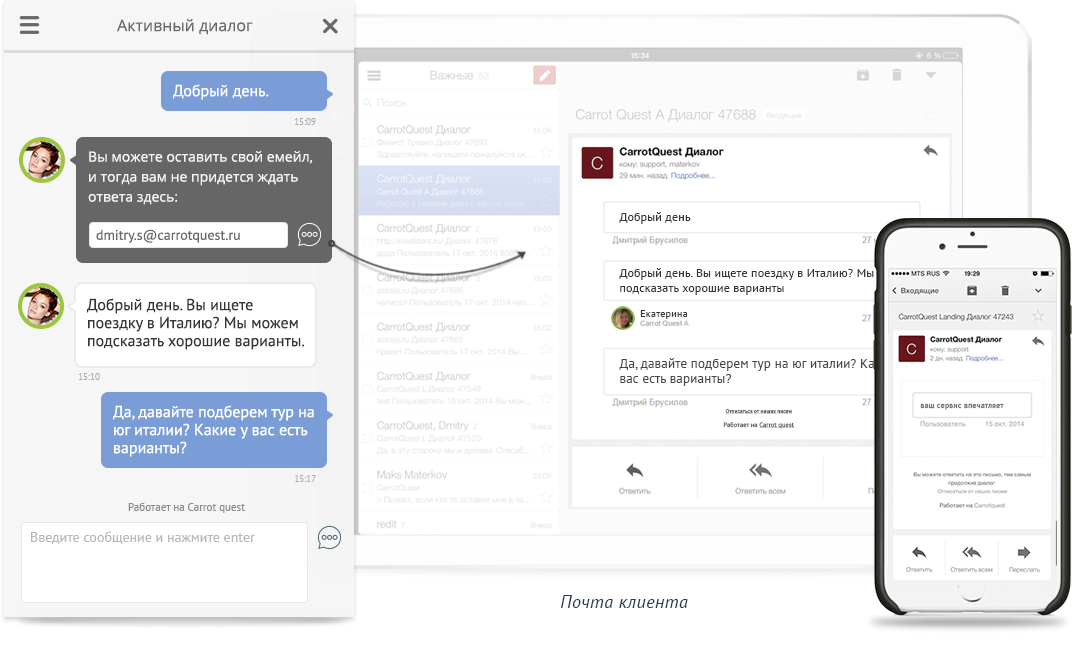Global problems online chat and a new model of communication users

While many people think that online chat rooms work fine, we at the carrot quest are confident of their imminent death. In the form in which they exist today - definitely.
Companies believe that everything is good, because users enjoy chatting. After all, they can get a quick answer to their question. But there is a problem, isn't it?
But let's understand the main causes of the death of online chat?
')
Problem 1. Immediate answers are a space load.
Experience shows that company operators must respond within 30 seconds. In some industries even less. There are those who try to respond in the first 10 seconds. If you do not respond quickly, your users will be disappointed. The need for immediate answers is a very heavy burden on the operator.
The standard model binds users to sit and wait for an answer, like manna from heaven, constantly being in online chat . Remember yourself, in a few seconds we are already running to the other tabs and safely forget about everything.

What happens when users close or minimize chat? In fact, the dialogue automatically ends. Also, the chat will simply close if there is no one to answer.
Often the operator can not conduct more than 3 conversations at a time. Otherwise, the response time will be long and users will not feel that they communicate with them live.
Even worse when the visitor is on hold. "We apologize for the expectations, all operators are busy." It looks awful, right?
Problem 2. Chat sessions are remnants of old technology.
Once the conversation is closed, then it went effectively. There is the concept of missed conversations where the operator did not respond quickly enough. As a result, users can not restore the conversation in which they stopped. If the chat is closed, they are forced to start a completely new conversation.

"Very nice". A couple of minutes passed, and the operator has already disconnected and the conversation needs to be restarted. He also wanted the client to provide all his data, although the question was rather simple. Such methods can only disappoint and scare away customers.
Companies constantly use the rule of 3 conversations. The operator can not wait long, because with an open conversation, he will not be able to start a new one. Therefore, after 1-2 minutes, they just close the chat. Some even without warning.
Problem 3. Chat is not built into a single system.
Online chat rarely combines with your other channels or information about your user. Clients switch between chat and email, constantly sacrificing context and conversation history. Chat is useless if it does not know about the user's actions and does not store the history of correspondence.
Even if the operators are available in the chat, there are such questions that they cannot answer right away, they need to be approved by colleagues or clarified by specialists.
Telephone support is usually repulsive to this, because customers often need to wait or constantly repeat their questions. Online chat completely copies this model. And customers expect a quick answer to their question. Here is the result:
“Sorry, we need to clarify something with the director of logistics. You can close this conversation and send an email to us. ”
This will not lead to anything good, as well as delaying a telephone conversation with a client. Your client at this time is thinking: “hell, how long, to hang or not to hang up?”
New communication model
Messengers have discovered a completely new model of communication between people .
Remember how you last communicated, for example, in Facebook, Viber, WhatsApp, Vkontakte, etc.?
- Open a dialogue, send your message,
- It is possible that you wait a couple of seconds to see the delivery notice,
- Close your phone, put it in your pocket,
- You can completely forget about this dialogue,
- Having seen the notification of the message, you open the conversation again and answer,
- All actions are almost the same.
We do not notice, because it has become a habit. The model of communication at the computer is identical to this. You can answer in 30 seconds or 30 minutes. This is the flexibility and convenience of modern technology, when the conversation stretches for hours and days. The next day, you can easily pick up a conversation from where you left off.
Users have adopted a new model, without even thinking about it. This habit just send online chat rooms to the past.
Here is our approach to communicating with users:
Solution 1. Unified system for all communications
Carrot Quest has combined chat with other channels and can collect all information about users. The visitor from any device is recognized as one person. This allows him to see the entire history of correspondence from both mobile and computer. Both from chat and mail.

The history of correspondence is always available to the user. For example, in addition to chat, correspondence is duplicated to the mail, from where the client can also respond.

Users will not constantly wait for your answers, they will either come back later, or see a letter in the mail. For example, they can receive a letter on the mobile. This model seems very comfortable.
Solution 2: Live talk without load
To get rid of the load of instant answers, you must send an automatic message to the user. Say that the answer they will not now. Therefore, they can leave the mail and continue communication there, or go to the site later and continue. Offer the client different options, he will definitely choose the one convenient for him and be happy.

This can be done with simple trigger messages; Carrot Quest allows you to customize them.
Just tell the visitor that he will receive an answer later and that he does not need to sit and wait. Direct statements, without deception, are really the most effective.
Solution 3: Flexibility
We believe that, ideally, every conversation should take place in real time. But we have no such thing as a missed conversation. This is the flexibility of modern messengers, which do not force us to sit and wait, as if the operator’s response should decide our whole fate.
In Carrot Quest, operators can also respond from any channels: chat, mail, mobile app.
In addition to information about the actions of users (what I read, where I came from, what data I entered, etc.), the service shows the visitor status.
Green edges avatars - user online. Yellow - asleep (the site is open, but now is not on it). Red is offline.

You will be able to use all the data about the user to the maximum so that the conversation is successful in real time, namely, when the user is again on the site. Any of your operator will be able to easily connect to the conversation.
We believe that the new model allows you to build communication with users at a new level. Why use old models when new ones already work much more efficiently?
This Carrot Quest does not stop, we are constantly generating new solutions. Join us and be the first to know about them.
Source: https://habr.com/ru/post/289306/
All Articles